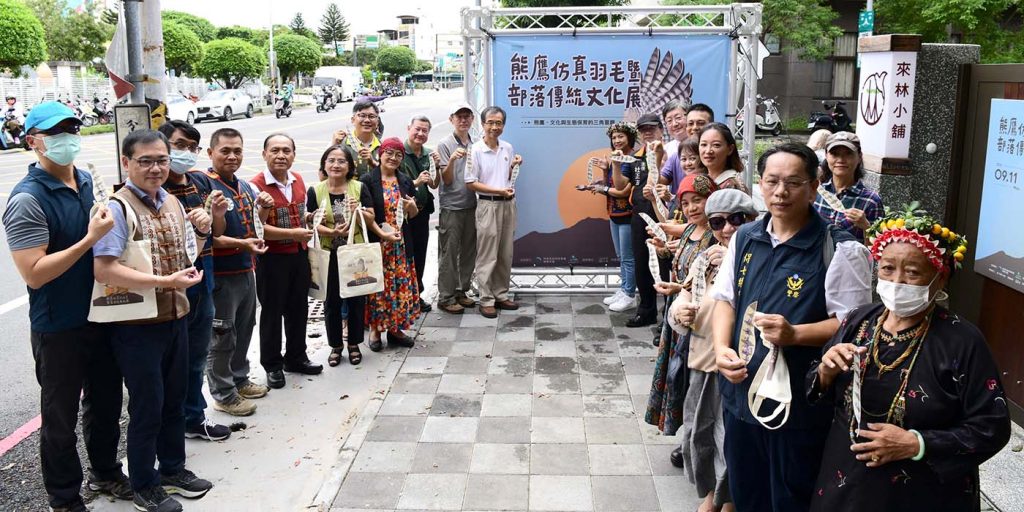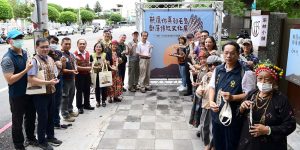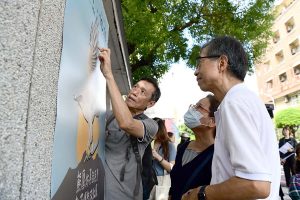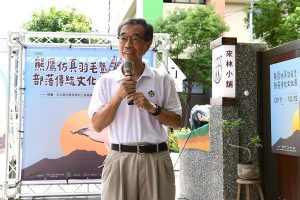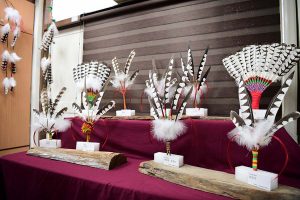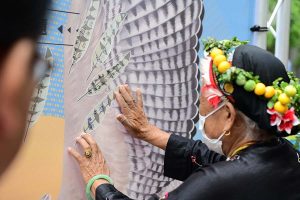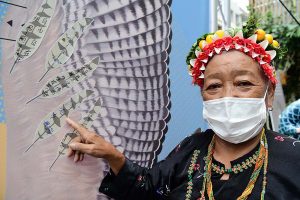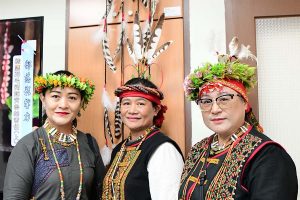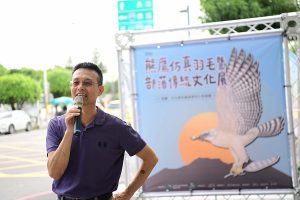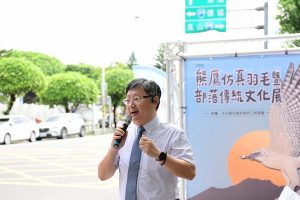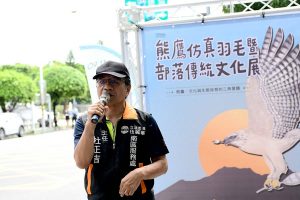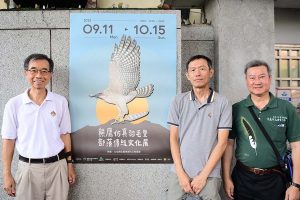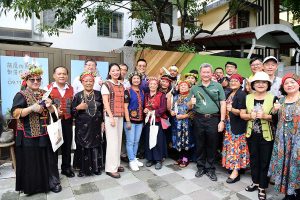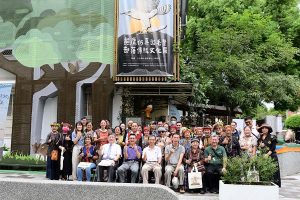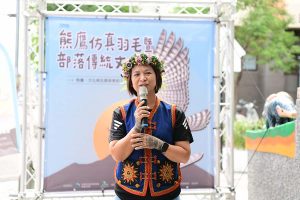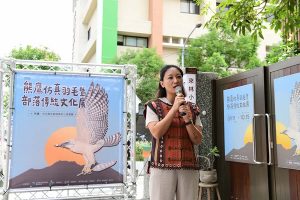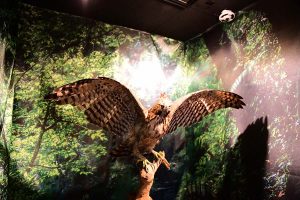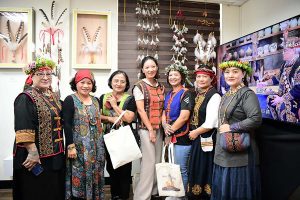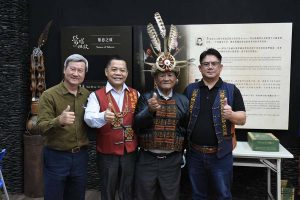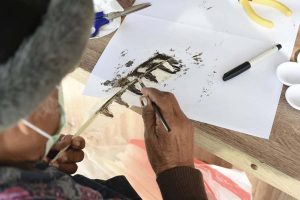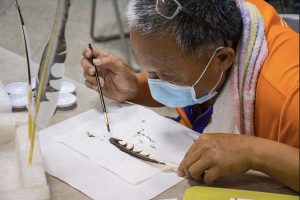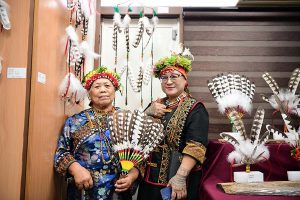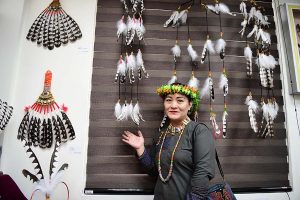Amid the lush greenery of Pingtung Forestry Lodge, the “Eagle Simulated Feathers and Tribal Traditional Culture Exhibition,” led by Professor Yuan-Hsun Sun from NPUST’s Institute of Wildlife Conservation, officially opened on September 11 at 10:00 AM. The event was graced by the presence of notable figures, including Deputy Director Zhu Musheng of the Forestry and Nature Conservation Agency’s Pingtung Branch, NPUST Vice President Chen Rui-ren, Pingtung District Prosecutor Chen Ying-jin, and several other local leaders and representatives from indigenous communities who have supported this significant research initiative.
The exhibition, spearheaded by Professor Sun and feather simulation craftsman Zhong Jin-nan, aims to preserve the habitat of the endangered eagle species while honoring the cultural traditions of the Paiwan and Rukai tribes. With support from the Forestry and Nature Conservation Agency’s Pingtung Branch, the project began in 2018, focusing on creating simulated eagle feathers as a sustainable alternative to traditional adornments. The exhibition not only highlights the ecological importance of the eagle but also delves into the rich cultural history of the Paiwan and Rukai tribes, featuring 33 innovative pieces, including simulated feather ornaments, fans, and ceremonial crowns.
Deputy Director Zhu Musheng emphasized the symbolic significance of traditional eagle feather adornments, representing honor and responsibility within the tribes. He highlighted the importance of balancing cultural preservation with ecological conservation, stressing that the promotion of simulated feathers must respect traditional cultural regulations to achieve a win-win situation for both cultural heritage and species conservation.
NPUST Vice President Shui-Jen Chen praised Professor Sun’s dedication to the conservation of rare birds such as eagles and owls and acknowledged the collaborative efforts that made the exhibition possible. He expressed hope that the exhibition would raise awareness of the beauty of eagle ecology and tribal culture, fostering greater support for sustainable conservation and the preservation of indigenous cultural traditions.
Mountain Hawk-eagle, Taiwan’s largest diurnal raptor, is a majestic bird often hidden in the high-altitude forests, making it difficult for the general public to see. In Paiwan and Rukai mythology, the bird holds a sacred place, symbolizing the transformation of leaders into protectors of the tribe after death. The simulated feather workshop initiated by Professor Sun ensures that this cultural practice can continue without further endangering the species. The workshops teach tribal leaders and craftsmen the intricate techniques of feather simulation, emphasizing that the use of these feathers must adhere to tribal customs and restrictions.
In addition to the static exhibition, seminars are held every Wednesday and Saturday at 3:00 PM in the Pingtung Forestry Lodge, featuring discussions led by tribal leaders, historians, artisans, and Professor Sun’s research team. These sessions aim to deepen the understanding of the intersection between tribal culture and eagle conservation, marking an important milestone in the sustainable development of both. The exhibition seeks to inspire a broader awareness of sustainability by merging innovative art, traditional culture, and species conservation.



